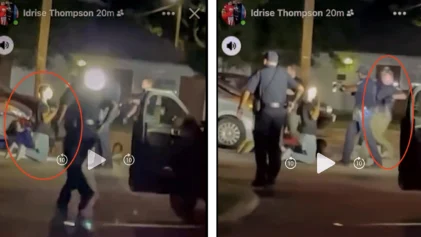
Atlanta is putting this theory to a hard, real-world test by closing its last shelter of last resort.
For decades, as many as 1,000 people with nowhere else to turn could come off the street at Peachtree and Pine, no questions asked. But years of litigation wore down the shelter’s operators. After epic battles against the city, tuberculosis, bed bugs and other hazards, the Metro Atlanta Task Force for the Homeless settled out of court and sold its enormous industrial building to Central Atlanta Progress, a downtown business group.
Relocating the people inside will be done in a “humane manner,” Central Atlanta Progress promised ahead of this month’s slow-motion shutdown, which begins Monday.
“We’ll take it one step at a time,” said Jack Hardin, co-chairman of the Regional Commission on the Homeless, which is helping to manage the transition.
But no one can say where those steps will lead.
“It’s hard not knowing where we’re going to live,” said Laura Wheaton, 34, who has been staying at the shelter with her four children for more than a month.
Other Atlanta shelters are so full “that all the rest of the people are going to be left for the streets,” she said.
Atlanta Mayor Kasim Reed announced a $50 million plan to place 500 chronically homeless individuals and 300 homeless families in permanent housing. But the city hasn’t acquired this housing yet, nor chosen property owners willing to operate units they develop or renovate, city spokeswoman Jenna Garland said.
Some might be offered one of 75 to 100 beds in a west-side building near the Fulton County Jail, more than an hour’s walk away.
“It’s a very big facility, so we wouldn’t be using the whole facility initially,” Hardin said. “We would prefer not to open up large shelters.”
Nationwide, cities that once herded the homeless into large downtown shelters are trying to quickly move them into long-term housing tailored to their needs. Some advocates say that with enough support, even people with serious mental health problems, addictions, chronic illnesses and a deep distrust of authority can sleep in their own beds.
This model has found success in places such as Houston and the state of Connecticut, said Nan Roman, president of the National Alliance to End Homelessness.
“As soon as we figure out how they get in, we need to figure out how they get out. It has to go together,” Roman said. “Otherwise, you get people living in the shelter system. It’s like if you had a hotel and no one ever left it, you have to keep building more and more hotels.”
Atlanta, however, is closing Peachtree-Pine without having first developed the capacity to replace it, said Anita Beaty, who retired six months ago as executive director of the task force.
“It’s a terrible mistake,” Beaty said. “The forces in Atlanta who don’t want homeless people visible — and certainly not on Peachtree Street — are extremely powerful.”
The shelter occupies some of the most valuable real estate in the South, a few blocks from the 55-story Bank of America Plaza, the city’s tallest skyscraper. Its occupants mingle with business executives and theater patrons on a stretch of Peachtree that includes the iconic Fox Theatre and the Georgian Terrace Hotel, where Clark Gable and other Hollywood stars stayed for the Atlanta premiere of “Gone With The Wind.”
“All they want to do is build high-price housing that most people are not going to be able to afford, and that’s not just down here — that’s everywhere in the country,” said Anthony Murphy, 68, who has lived at Peachtree-Pine since 2011.
In 2003, shortly after it was formed, the regional commission released a 119-page “Blueprint to End Homelessness in Atlanta in Ten Years.”
The goal now is to make homelessness “rare, brief and non-recurring,” Reed’s office said.
The latest counts found 3,572 homeless people in Atlanta, including 1,567 in emergency shelters, 1,324 in transitional housing and 681 without any shelter. Ten percent — roughly 350 — are chronically homeless, the mayor’s office said.
Hardin said a new team of caseworkers is getting to know the Peachtree-Pine population, “so we can begin to form conclusions about what’s the best solution for those people.”
Nationally, homelessness declined to about 550,000 people during a nationwide count in 2016, the U.S. Department of Housing and Urban Development said. Atlanta’s chronically homeless population declined 61 percent since 2013, the mayor’s office said.
“We’ve done a good job of reducing the total count,” Hardin said. “We won’t need all the shelter beds that we’ve had in the past.”
Others doubt that.
Having “low-barrier” shelter beds available to people who have been told they can’t stay elsewhere is a matter of life and death, said Carl Hartrampf, who has run the task force since Beaty left. “I believe they’re going to find out they need more than they think.”


